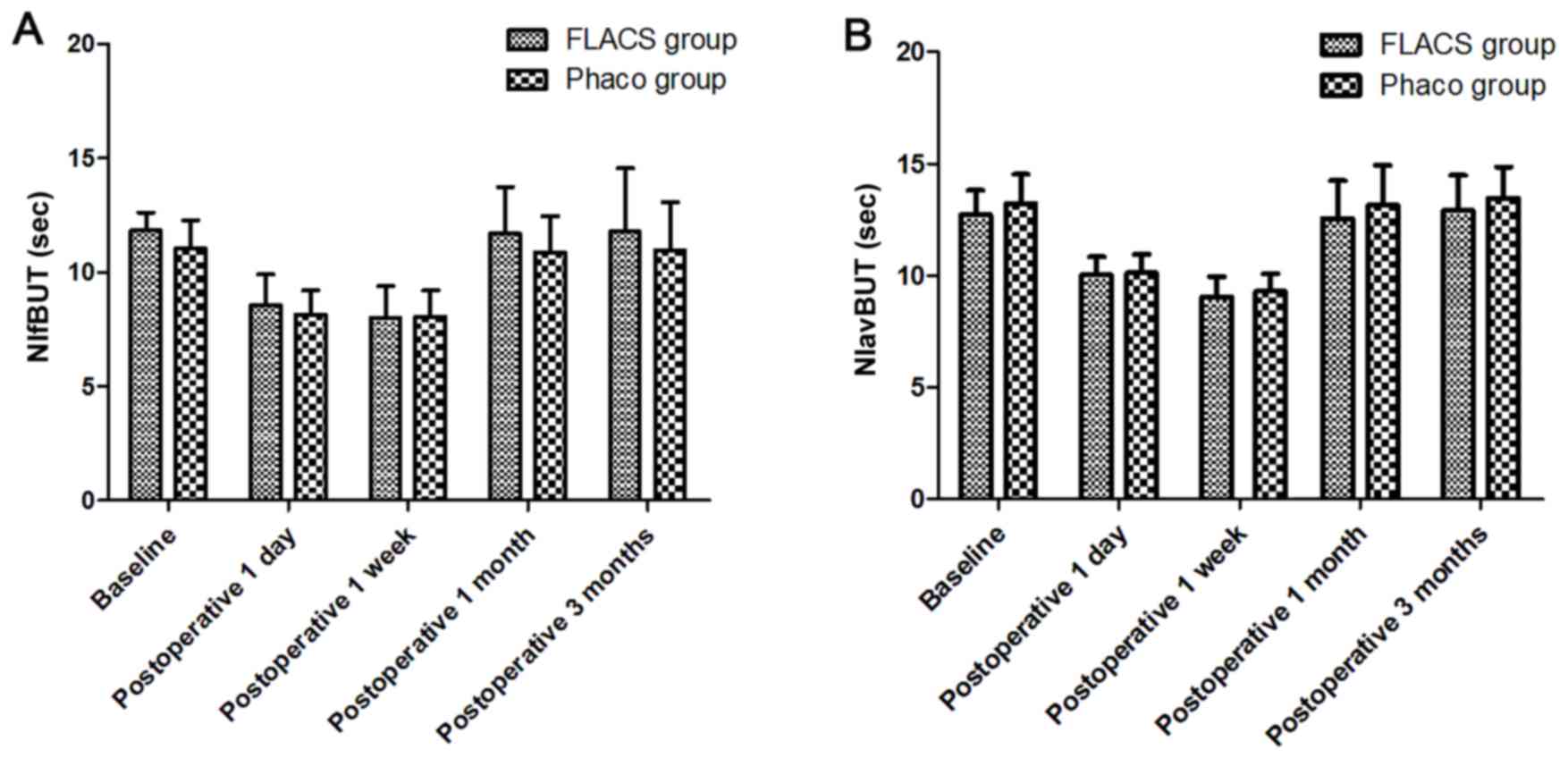Effects of femtosecond laser‑assisted cataract surgery on dry eye
- Authors:
- Published online on: October 15, 2018 https://doi.org/10.3892/etm.2018.6862
- Pages: 5073-5078
-
Copyright: © Shao et al. This is an open access article distributed under the terms of Creative Commons Attribution License.
Metrics: Total
Views: 0 (Spandidos Publications: | PMC Statistics: )
Total PDF Downloads: 0 (Spandidos Publications: | PMC Statistics: )
Abstract
The aim of this study was to investigate the effect of femtosecond laser‑assisted cataract surgery (FLACS) on tear film and ocular surface function. Patients with age‑related cataract who underwent phacoemulsification (phaco) in Air Force Aviation Medicine Research Institute Affiliation Hospital from January 2016 to December 2016 were randomly divided into two groups. Patients in experimental group (n=123, 150 eyes) received FLACS, while patients in phaco group (n=110, 150 eyes) underwent conventional coaxial micro‑incision phaco and were implanted with foldable intraocular lens (IOL). Our results showed that there were no statistically significant differences in general conditions between the two groups. Ocular surface disease index (OSDI) and corneal fluorescein staining (CFS) scores of patients in both groups after operation were significantly increased compared with those before operation, but breakup time (BUT) and Schirmer's I test scores decreased significantly at 1 week after operation compared with those before operation and basically returned to preoperative baseline levels at 3 months after operation. CFS scores and OSDI in the FLACS group at 1 day and 1 week after operation were increased more significantly than those in the phaco group, but there were no statistically significant differences at 3 months after operation. The above results showed that the effect on ocular surface function in the FLACS group after operation was greater than that in the phaco group, and the dry eye symptoms in the FLACS group were more obvious after operation. Both FLACS and conventional phaco have certain effects on the ocular surface function of patients, and there are statistically significant differences only in the early stage. FLACS has greater effects on CFS and dry eye symptoms.










